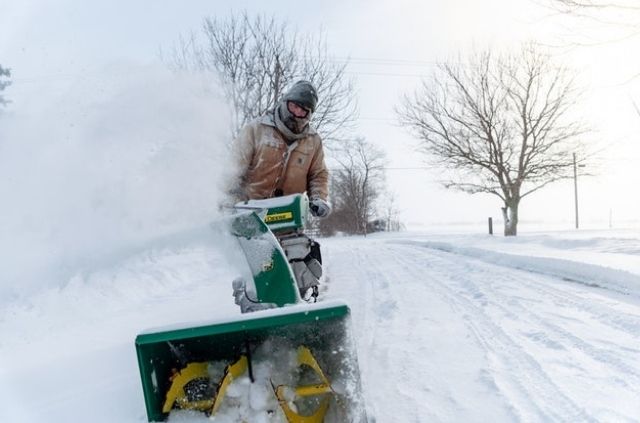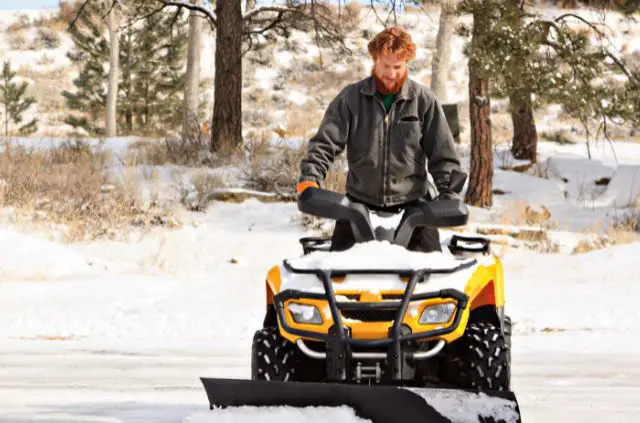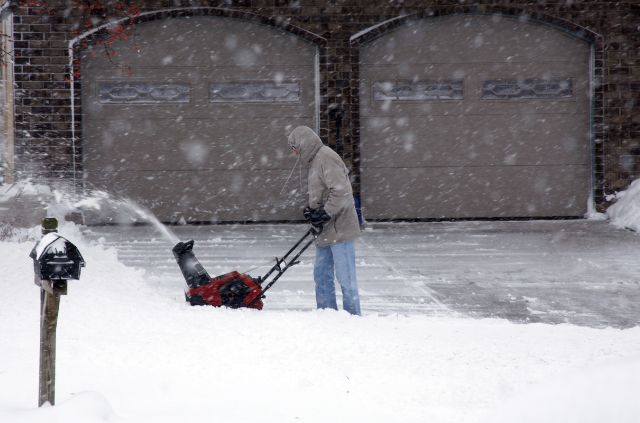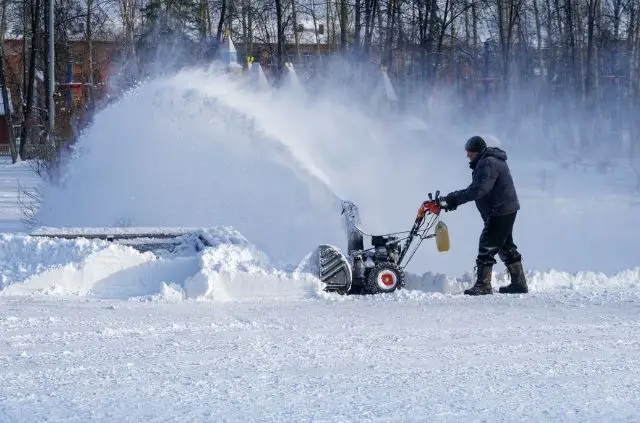How Much Does a Snow Blower Weigh?
People who live in cold climates know how beautiful snow can be. But with that beauty comes a lot more work for homeowners. We need to clean it off cars, driveways, and sidewalks in order to make surfaces less slippery.
Using a snow blower is one of the easiest ways to accomplish this task. These outdoor machines can move snow much more efficiently compared to a shovel. However, this increase in power does come with a price – more weight.
So, how much does a snow blower weigh? You can expect a snow blower to weigh anywhere from 80 lbs to 300 lbs. Gas, electric, and battery powered snow blowers will range in weights depending on a number of different factors.
How Snow Blowers Work
Snow blowers are built to transfer snow from one area of your property to another. As the machine moves forward the auger pulls snow into the impeller and disperses it out through a chute.
The operator holds and controls two levers on a snow blower. One lever engages the auger, while the other puts the machine in drive. Snow blowers can be started by the push of a button, or a pull recoil start.
They operate on gasoline, electricity, or battery power. Gas machines will require oil changes, spark plug replacements and more maintenance in general. But gas snow blowers are also the most powerful and will have the capability to move large amounts of snow.
Battery and electric powered machines don’t require as much maintenance, but they lack in the power department. These snow blowers work best on smaller driveways and sidewalks.
How Much Does a Snow Blower Weigh?
As we briefly mentioned in the sections above, snow blowers can weigh anywhere from 80 lbs to 300 lbs. Keep in mind that this research was done with the focus on residential machines. Commercial snow blowers can weigh much more than 300 lbs, because they are built with heavier components for all day use.
| Snow Blower Type | Average Weight |
| Single-Stage Snow Blower | 79 lbs (35.83 kg) |
| Two-Stage Snow Blower | 203 lbs (92.08 kg) |
| Three-Stage Snow Blower | 278 lbs (126.10 kg) |
| Battery Snow Blower | 73 lbs (33.11 kg) |
It’s more important to choose a snow blower based on the area you live in – rather than the weight. A lightweight machine might be easier to maneuver, but it won’t be good to have if you live in an area that gets heavy snowfall.
A two-stage snow blower is best for all conditions and it will still be easy enough to move around. Three-stage machines aren’t all that necessary for the average homeowner.
Sure, they will be able to clean your property at a much faster rate, but it’s overkill unless you have a very long driveway. Three-stage machines are best for people who own a snow removal business, or deal with regular snow throughout the year.
Are Snow Blowers Hard to Push?
Some people think that you have to use all of your weight in order to move forward with a snow blower. The truth is that these machines are built with different gears, so you can adjust the speed accordingly.
Snow blowers will move forward when the drive lever is engaged, so there’s no need to push the handles with all of your energy. The only time this might happen is when you’re working with a heavy amount of wet snow.
Wet snow can be a pain to remove, especially when it’s really deep. This kind of precipitation will clog the chute more often – which means you will need to stop the machine to clear it. Clearing your areas with wet snow is possible, but it will take more time as a result.
Are Snow Blowers Hard to Turn?
Snow blowers can sometimes be difficult to turn for a variety of reasons. For starters, these machines are designed to only have two wheels. Lawn mowers for example have four wheels – where the front two wheels are what points the machine in a new direction.
Unfortunately, you won’t be able to turn a snow blower as easily as a lawn mower. Even if the machine has power steering you will still need to apply some force when attempting to change direction.
But snow blowers can also be difficult to turn based on the conditions they are designed to operate in. When you’re working in wet snow, it’s common for the front skid shoes to get stuck. You will either need to reverse and start a new path, or force the machine in a different direction.
Transporting a Snow Blower
- Truck – If you already own a pickup truck, you’re one step closer to transporting a snow blower. The only problem is finding out how to load the machine into the bed. The easiest way to accomplish this task is to use ramps. These accessories can also be used to transport lawnmowers, motorcycles, and other types of small engine vehicles.
- Trailer – Another way to transport a snow blower is to use a trailer. A 5′ x 8′ trailer is the ideal size for moving single-stage, two-stage, and three-stage machines. These devices are big enough to fit your snow blower and they will also come with a built in ramp. The trailer sits low to the ground and all you need to do is bring it down for easy access.
- Cargo Carrier – It’s still possible to transport a snow blower even if you don’t have a pickup truck or trailer. SUVs that have a trailer hitch can use a cargo carrier. This piece of equipment is kind of like a heavy duty bike rack for your machine. Just know that these carriers have weight limits, so make sure that your snow blower will meet the requirements.
Conclusion
It should now be clear that snow blowers come in a handful of different sizes, shapes, and weights. But choosing a snow blower on weight alone is not the best deciding factor.
If you live in the northern parts of the country, a lightweight snow blower will only help so much. The reason why single-stage snow blowers aren’t heavy is because they lack components and parts needed for moving heavy amounts of snow.
That’s why you should choose a machine based on your location. A snow blower will do a majority of the work for you, so there’s no need to worry about pushing it around.
Further Reading
Search Terms
- How much does a snow blower weigh?
- Are snow blowers hard to push?
- Are snow blowers hard to turn?







